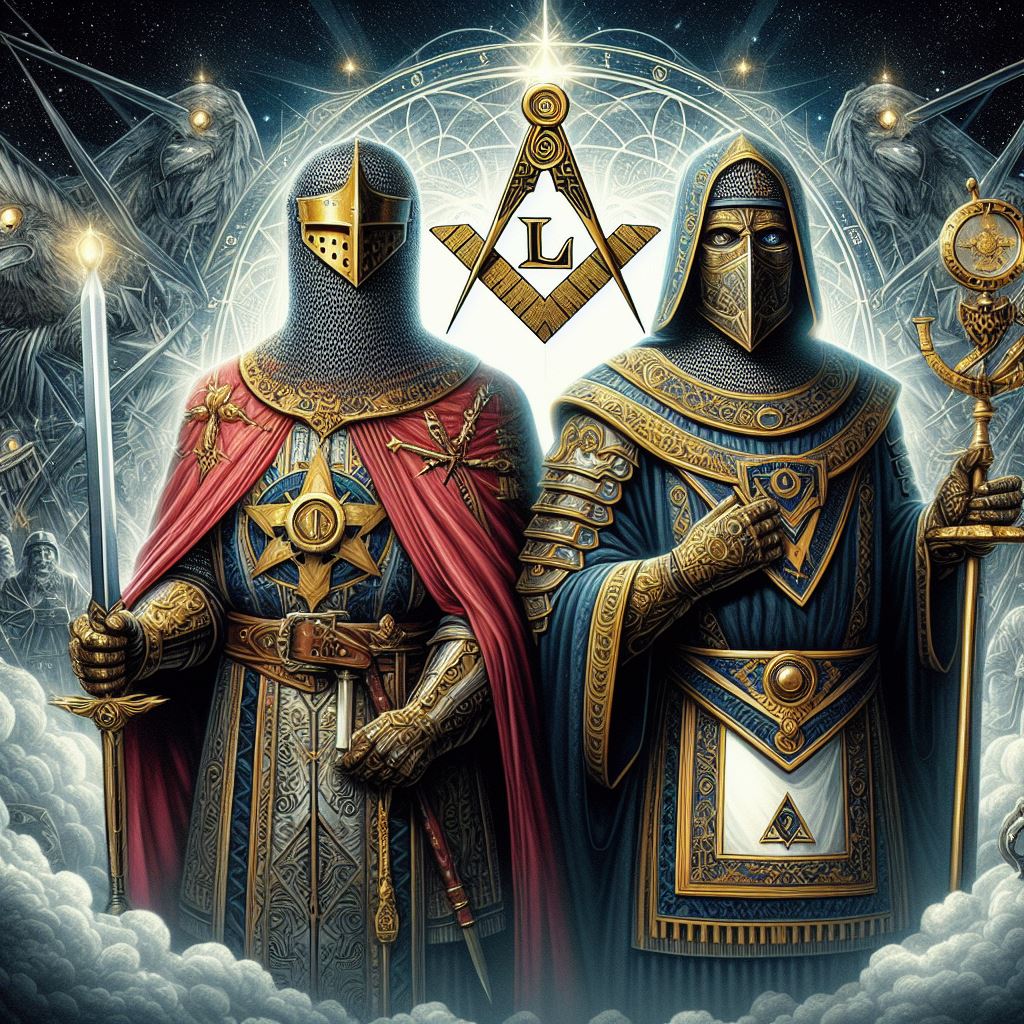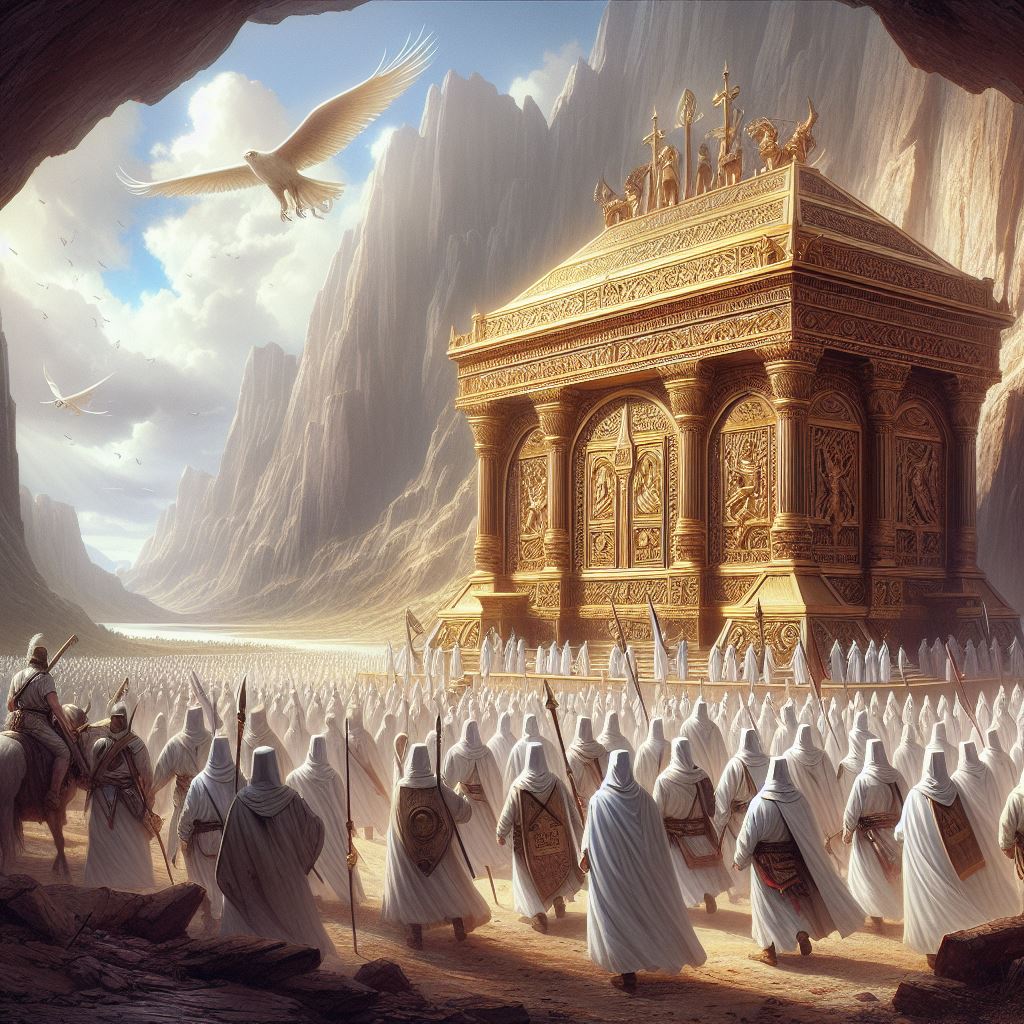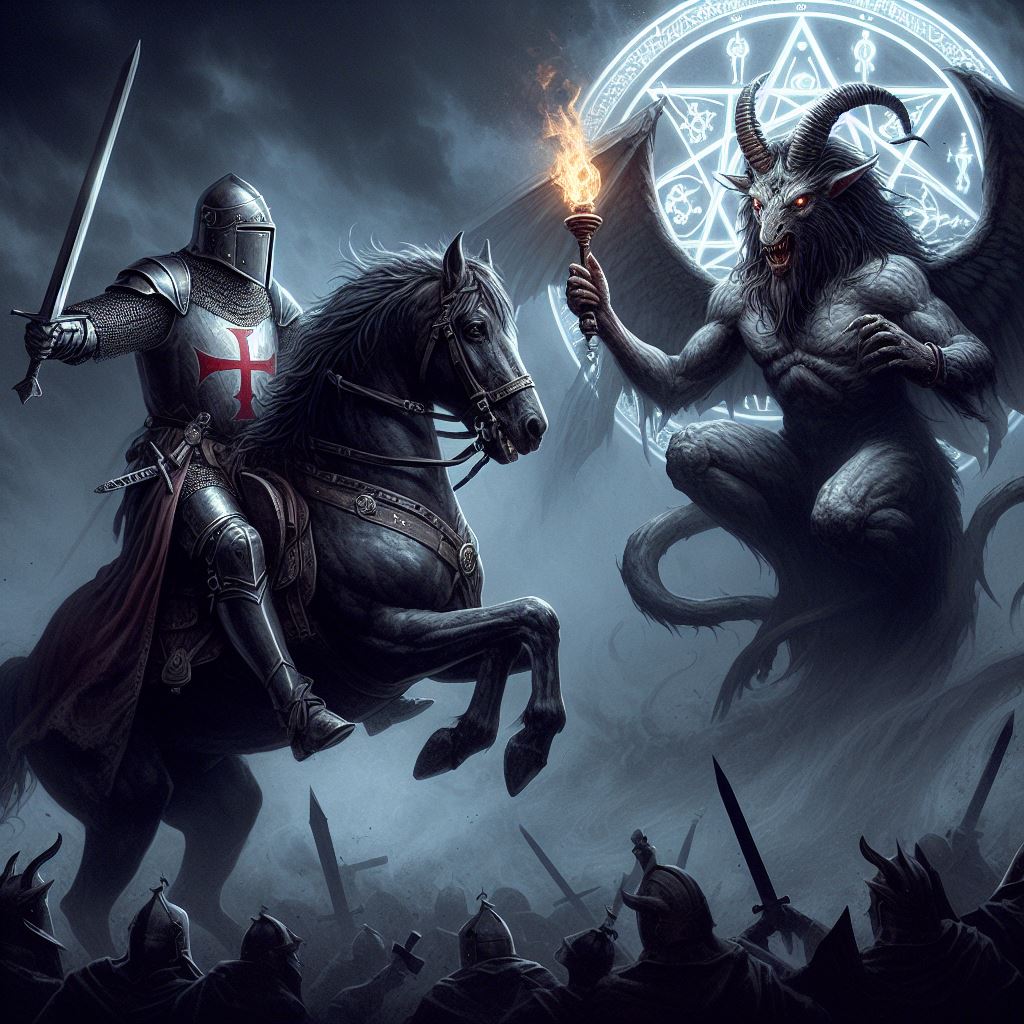Visiting churches in Portugal, I’ve often noticed the presence of the Pentagram symbol and wondered – what on earth is an occult image doing in a Christian place of worship?
In the United States in recent years, a group of self-proclaimed Satanists have repeated unveiled a statue of the goat-headed demon Baphomet with a pentagram fixed to its forehead. They are protesting against Christian religious displays by some states that they argue contravenes the constitution – in terms of separating church and state. And they make their point by carting round this provocative bit of sculpture.
For us on this blog, there are two interesting points to note about that. One is that the pentagram pops up in medieval Christian churches – and especially Templar places of worship (mainly in Portugal for some reason). Furthermore, the evil Baphomet was alleged to have been worshipped by the Knights Templar – an accusation made at their trials.
So it is very disarming when you see a pentagram in a Christian church. Surely this is a pagan or Satanic symbol?

Having been brought up a Catholic myself, I know all about the Catholic obsession with numbers. The Trinity. Twelve apostles. Seven crops up everywhere – seven churches, seven trumpets, seven seals, etc. The Virgin Mary grants you seven graces for saying seven Hail Marys in recognition of the seven sorrows she suffered leading up to the death of Jesus.
Nine choirs of angels – no more, no less. And of course thirteen is the number of betrayal. These figures – 1, 2, 3, 5, 7, 10, 13, etc – are charged with meaning in Catholic theology.
The Pentagram has five points. Catholics argue that it’s OK to find it in a place of worship because it represents the five wounds suffered by Jesus at the crucifixion. It provokes you into contemplating his torment on the cross.
The Catholic church obviously lists the wounds with gory relish: two in the wrists for the nails; two through each of his feet and one wound from the lance of the Roman soldier Longinus who pierced the side of Jesus.
The church pictured above is actually Franciscan and was built after the Templars were destroyed in 1307. However, one normally associates the Pentagram with paganism so it’s interesting to see it pop up in a Christian context. And it seems to do so especially in Portugal.
At Santa Maria Olival in Portugal, the Pentagram is very clearly evident at the end of the nave. This is the church where Templar grand masters were buried in the Middle Ages. It’s based in the former Templar citadel of Tomar. When you walk into the church – you just can’t miss it – it’s like an evil eye staring down at you.
FIND OUT MORE: Were the Templars and Cathars linked?
At Rosslyn chapel in Scotland, there are pentagrams carved everywhere. Most of them, the authorities tell us, are masons’ marks. They have no meaning or significance. But, some have argued that a particular carving in the sacristy down below represents the star Venus.
I investigated this mysterious star carved into the sacristy wall with American TV presenter Scott Wolter on a Templar special edition of the Discovery documentary American Unearthed.
We looked into theory that this pentagram-shaped star was proof that the Knights Templar journeyed to the New World after being crushed by King Philip of France. They would have navigated by the stars. Was this carving therefore some kind of navigational map?











